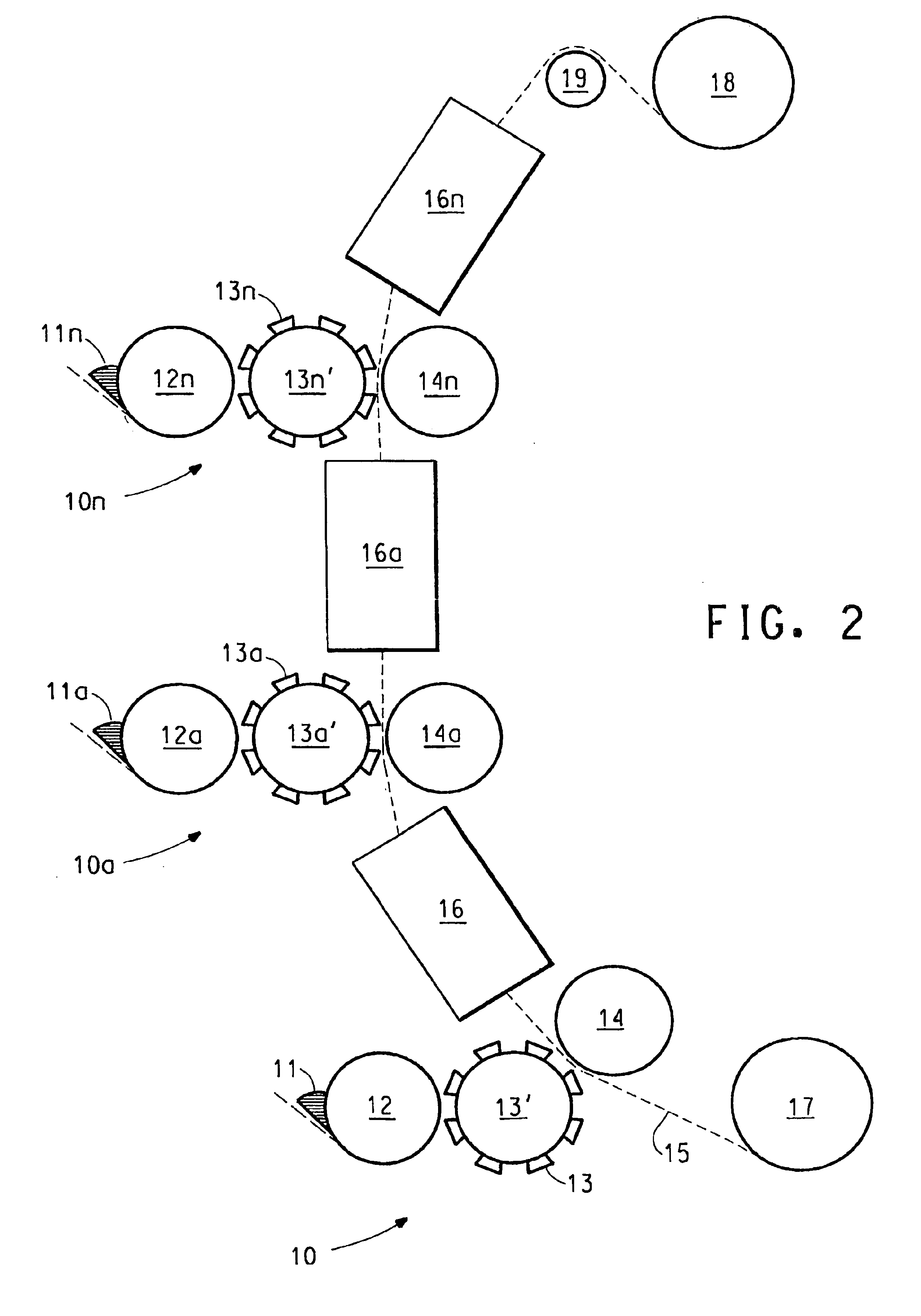Production of catalyst coated membranes
a technology of catalyst coating and membrane, which is applied in the direction of cell components, final product manufacturing, sustainable manufacturing/processing, etc., can solve the problems of difficult to establish the desired ionic contact between the electrode and the membrane, ccms are typically more difficult to manufacture, and it is difficult to apply to commercial manufactur
- Summary
- Abstract
- Description
- Claims
- Application Information
AI Technical Summary
Benefits of technology
Problems solved by technology
Method used
Image
Examples
example 1
Preparation of Alcohol Dispersions of Ion Exchange Polymer (Perfluorinated Sulfonic Acid Polymer—Acid Form)
[0050]A 3 liter rotary evaporator flask is charged with 1000 g of a perfluorinated sulfonic acid polymer dispersion (Nafion®—obtained from DuPont), comprising 5 wt % 1100 EW perfluorinated sulfonic acid polymer (PDMOF), in 50% water−50% mixed alcohol (methanol, ethanol, 2-propanol media)). Rotary evaporation is commenced at 60 rpm, 15 mm Hg pressure, with the evaporation flask immersed in a 25° C. H2O bath. A dry ice / acetone bath (−80° C.) is used as the overheads condenser. After several hours of slow, steady operation, 520 gms of H2O / mixed alcohols is removed. As the solids level increased to a nominal 10% level, a noticeable increase in viscosity. (3→20 cps) is observed. A slow approach to this point is necessary to avoid irreversible gelation.
[0051]After a 50 gm sample of the evaporation flask residue is removed, 450 g of n-butanol is added to the evaporation flask. The cle...
example 2
Preparation of Electrocatalyst Coatings Compostions
[0055]Using the above containing perfluorinated sulfonic acid polymer / alcohol dispersions as basic component, catalyst coatings suitable for flexographic printing of CCMs for use in fuel cells are prepared as follows:
[0056]A 13.2 wt % solids perfluorinated sulfonic acid polymer (1100 EW—PDMOF) in n-butanol dispersion, prepared as described above (28.94 g) is combined with 77.31 g n-butanol. The resulting mixture is then cooled down to ˜10° C., well below the 35° C. n-butanol flash point, by the addition of dry ice. This serves to both lower the temperature and to displace the ambient O2 with the generated CO2 gas, thus providing an added margin of safety for the addition of the potentially pyrophoric catalyst powder (platinum supported on carbon). To the cooled mixture, 18.75 g of 60 / 40 C / Pt (E-Tek Corporation) is added slowly with vigorous stirring in order to wet out the powder instantly and to rapidly dissipate the heat of adsorp...
example 3
Preparation of CCM's Utilizing Above Electocatalyst Coating Compositions
[0059]Cyrel® flexographic printing technology (DuPont Company) is used with the above electrocatalyst coating composition to print directly on a variety of perfluorinated sulfonic acid polymer (acid form) film substrates. The press used is a GMS Print Proof system as made by GMS Co. (Manchester, England).
[0060]The as received Cyrel® flexographic plate stock is photo-imaged via strong UV exposure to a precision pattern by a photographic contact negative “tool”. Exposed areas of thick photopolymer mixed film are UV crosslinked. The unexposed areas are next washed away by the appropriate Cyrel® developer solution. Left behind is the cross-linked, rubbery plate surface in sharp relief areas that act to transfer coating compositions in precise patterns and thicknesses to a moving film substrate. The flexographic plate is mounted on a roll which in rotary motion prints the composition on the moving substrate. After pr...
PUM
| Property | Measurement | Unit |
|---|---|---|
| size | aaaaa | aaaaa |
| thickness | aaaaa | aaaaa |
| thickness | aaaaa | aaaaa |
Abstract
Description
Claims
Application Information
 Login to View More
Login to View More - R&D
- Intellectual Property
- Life Sciences
- Materials
- Tech Scout
- Unparalleled Data Quality
- Higher Quality Content
- 60% Fewer Hallucinations
Browse by: Latest US Patents, China's latest patents, Technical Efficacy Thesaurus, Application Domain, Technology Topic, Popular Technical Reports.
© 2025 PatSnap. All rights reserved.Legal|Privacy policy|Modern Slavery Act Transparency Statement|Sitemap|About US| Contact US: help@patsnap.com



